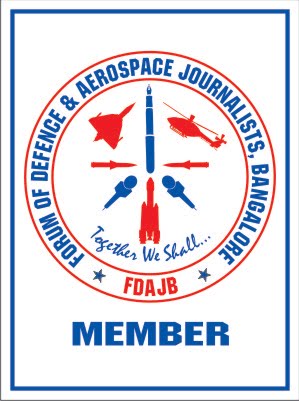
By Anantha Krishnan M
Express News Service
Bangalore: As India prepares to give the initial operational clearance (IOC-2) to its home grown fighter Tejas on December 20, the scientists at the National Aerospace Laboratories (NAL) are delighted that over 20 years of their hard work will finally pay rich dividends. NAL Director Shyam Chetty said that the technologies developed for Tejas will set new benchmarks for India's future fighter jet development programmes. The control law team consisting of members from NAL, ADA and HAL which he heads, had provided decisive leadership in developing the flight control laws including the autopilot, simulation and modelling. The team also developed advanced parameter identification techniques used for flight validation and updation of the aerodynamic database for safe flight envelope expansion of the Tejas. “Fourteen variants of Tejas have completed over 2450 flights. The 17 Test pilots, who flew Tejas so far, have rated the flying qualities of the aircraft as excellent,” Shyam said during his team's interaction with Express on Friday.
V Nagarajan, chief scientist and head of National Trisonic Aerodynamic Facility at NAL, which houses the country's only 1.2-m trisonic wind tunnel, said that stores separation tests (a critical operation that could affect the safety of the fighter during weapon release), was analysed at NAL's wind-tunnel facility. Necessary data was generated to enable safe store separation in flight. The scientists had also conducted complex air intake buzz studies to establish the safe flight envelope boundary limits for the aircraft engine. “This is important as the disturbed air flow entering the air intakes can cause the engine performance to deteriorate suddenly and thus affect the safety of flight,” said Dr G K Suryanarayana, chief scientist.
Entering the wake (the highly circulatory vortex flow emanating from the lead aircraft) during close combat is an operational hazard fighters have to encounter. It can severally affect the performance of the flight control system and in extreme cases result in major structural damage. “To ensure that there is no hazard to Tejas on entering the wake, extensive modelling and simulation studies were carried out at the Flight Mechanics and Control Division, and the models were subsequently validated by flight tests. The aircraft under test was made to actually enter the wake emanating from the lead aircraft highlighted using smoke generators at different separation distances and relative orientations,” said Dr Pashilkar, a scientist.
The use of composite materials made Tejas lighter and has resulted in more than 20 per cent savings in cost and about 15 per cent savings in weight said H N Sudheendra, head, Advanced Composite Division. “The challenge was to make the structures free from joints. The technology to manufacture 152 composite components has been transferred to HAL by NAL for the Tejas series production, while the remaining 13 critical components will continued to be made by NAL in partnership with the private sector,” he said. Tejas airframe is 45 per cent composites (mostly carbon-epoxy) by weight, contributing to its reputation as the world’s smallest light weight fighter aircraft.
Satish Chandra, head of Structural Technologies, said that all the wind tunnel models of Tejas were designed at NAL by a joint team. The transonic flutter of Tejas wing with the R-73 missile was cleared by conducting specialised wind tunnel tests which enabled Tejas to get initial flight clearance.
Another first for the country, according to Dr Jatinder Singh, a chief scientist, was the successful flight validation and update of the aerodynamic database used extensively for simulation and design of the flight control laws. “It involved carrying out 500 plus flight tests for identifying the differences in flight when compared to simulation,” he said.
Copyright@The New Indian Express





























